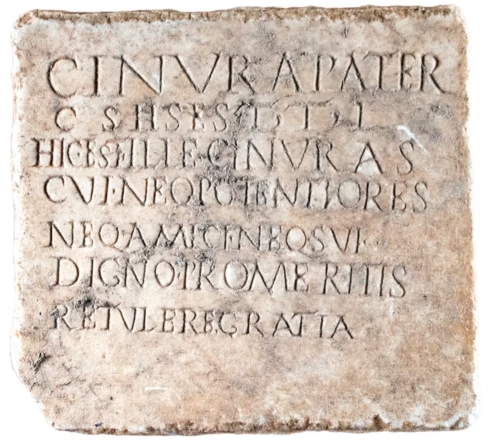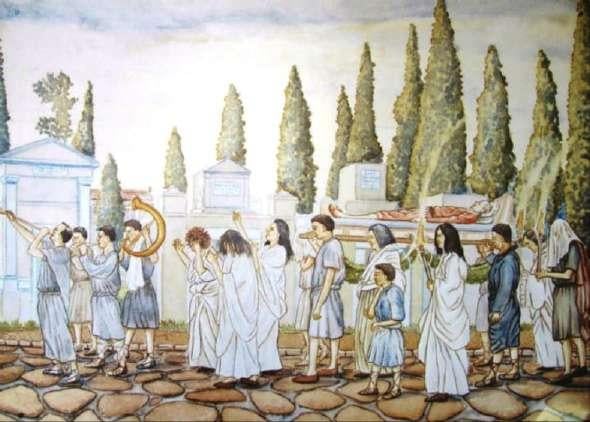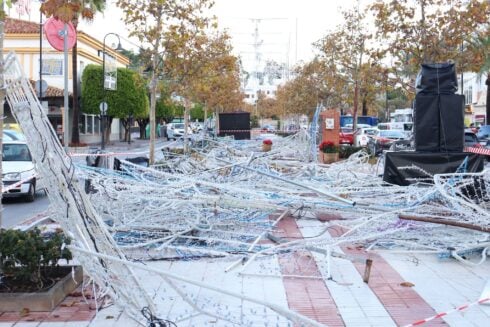SOMETIME around the reign of Emperor Nero, in the Roman city of Gades (now Cadiz), a man named Cinuras was laid to rest beneath a marble tomb.
The tombstone, likely paid for with his own hard-earned savings, bore an unusually bitter epitaph:
“Neither the most powerful, nor his friends, nor his loved ones, showed him any gratitude when he was alive.”
Nearly 2,000 years later, his words resurfaced not in a museum or textbook, but beneath an old chalet in the northern part of Cadiz. It was early January 2022, and workers doing renovations accidentally uncovered Roman fragments – just the beginning of a much larger story.

Thanks to subsequent funding and the involvement of professional archaeologists, what was initially thought to be an isolated find has since revealed itself as a vast Roman necropolis: a sprawling ‘city of the dead’ that has remained hidden for centuries.
Today, Cinuras is just one of many voices rising from the soil.
Historians Jacobo Vazquez and Adrian Santos are leading the excavation. They’ve already published four academic papers on the site, with a fifth in the works, and yet, both admit it’s Cinuras’s story that lingers most deeply.
“We’ve done a lot of name research,” says Vazquez. “Cinuras is almost always a slave name. And yet here he is – buried in a marble tomb, next to magistrates. That means he died a free man.”
That much is clear from his burial. Roman tradition did not allow slaves to be interred in such proximity to the city’s elite. It’s likely Cinuras was manumitted – freed after years of loyal service – and succeeded well enough to afford a proper tomb. But the bitterness etched into his final words suggests that wealth and freedom didn’t buy him the peace he craved.

“We are giving voice to a man who otherwise would have remained utterly unknown,” Santos reflects. “It’s very beautiful. The way his family and friends treated him is forgotten now. What remains is a real man, who really lived.”
And Cinuras is far from alone. The archaeologists have so far unearthed 269 inscriptions, many of them rich with personal histories. One tomb belonged to a woman who lived to be 100 – an exceptional age in Roman times.
Others seem to cluster around what may have been a funerary college or even a temple, possibly dedicated to the Egyptian goddess Isis.
“We think this site was sacred to Isis,” explains Vazquez. “She was often worshipped in port cities like Gades. People probably came here regularly to pray and wanted to be buried near a place they loved.”
Small terracotta votive statuettes – hand-held offerings likely left by worshippers – support this theory. So too do faint wall paintings showing birds and reeds, symbols linked to the Nile and Isis’s mythology.
“This wasn’t a luxurious temple,” Santos adds, “but a local, working chapel. It served real people, and they came back here in death.”
READ MORE:
- This ‘natural paradise’ in Spain that’s ‘tourist free’ and ‘littered with Roman ruins’ will pay you €15,000 to move there – so what’s the catch?
- Ancient Roman forum is discovered in Spain: Experts believe it served this special purpose
- Human remains from Roman era found during Malaga metro construction
In total, the team has documented 55 burials so far, ranging from simple pits cut into dunes to ornate marble tombs dating from the 4th century AD, when the necropolis appears to have been abandoned.
Remarkably, many of the tombstones were found stacked like playing cards, suggesting someone – long after Rome’s fall – had preserved them rather than destroy them.
“That kind of care is rare,” says Santos. “Normally, they’d be smashed or repurposed. But here, someone saw their value. Thanks to them, we now have this incredible archive of lives.”
The work is far from over. Vazquez and Santos believe the site could fundamentally reshape how we understand Cadiz’s place in the Roman world. Far from being a sleepy outpost, Gades may have been a centre of cultural exchange and spiritual significance.
“The investigation is just beginning,” Vazquez says. “And we’re probably going to make some overwhelming discoveries.”
But even now, before the full picture is known, the rediscovery of Cinuras feels like a quiet triumph.
A man who once lamented being forgotten is now, against all odds, remembered – his story a voice from the grave that still has something to say.
Click here to read more La Cultura News from The Olive Press.








